
only option to treat your
patients’ severe pain

BioWaveHOME®
BioWaveHOME® is a more powerful handheld treatment option than BioWaveGO® with a 30% higher maximum output. BioWaveHOME can be used with BioWave’s Hydrogel Electrodes, Percutaneous Electrodes and Silver and Blue BioWraps®.
BioWaveHOME can reduce VAS pain scores by 50-75%(2). BioWave’s patented high frequency neurostimulation is delivered through skin directly to pain nerves, inhibiting action potential propagation along the nerve, blocking the transmission of pain signals to the brain (Frequency Conductive Block Theory).
Patients report an increased range of motion and reduced stiffness. Relief occurs immediately as patients increase the intensity and lasts long after treatment. The result is better outcomes for patients
BioWaveHOME is Superior to Other E-Stim
Fast results
Many patients report relief after one 30-minute session and greater relief after multiple treatments
100% drug-free alternative to opioids
BioWave technology has been shown to reduce medication consumption in clinical studies (1,2)
Long-lasting pain relief
8 hours of pain relief, on average following a 30-minute treatment.
Deep, smooth sensation
BioWave treatments range in sensation from tingling to a deep, smooth muscle massage.
Easy to use
No programming. Pain relief at the press of a button.
(1)Blinded Randomized Sham Controlled Study using BioWave for the treatment of chronic pain in patients with grade 3 and 4 osteoarthritis of the knee, Rush University Medical Center, Chicago, IL, Orthopedics, Vol. 30, #6, June 2007
(2)An Open-Label Pilot Study Investigating Noninvasive High-Frequency Peripheral Nerve Fiber Stimulation in Chronic Pain; Hegarty, Bretherton, World Institute of Pain, 1530-7085/20/Pain Practice (See https://biowave.com/clinical)
Electrode Placement Examples
- Pads must not touch each other when the unit is turned on – one inch is the minimum spacing.
- Pads are reusable but must be tacky to the touch. If not, please use a new set of pads.
- Pads can typically be reused 8-10 times.
-
B-Set
2 Locations of Pain -
E-Set
1 Location of Pain -
U-Set
1 Location of Pain
Areas of treatment
Electrode Placement Examples
Low Back
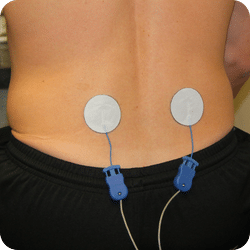
Back Pain in Two Locations (e.g. Bilateral Low Back Pain)
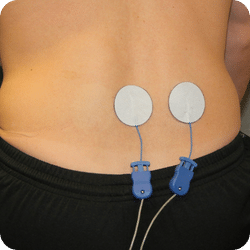
Low Back Pain on One Side of Spine (e.g. Unilateral Pain)
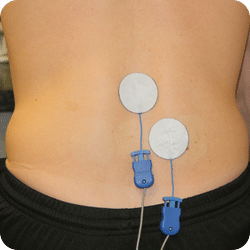
Low Back Pain Focused Over a Facet Joint
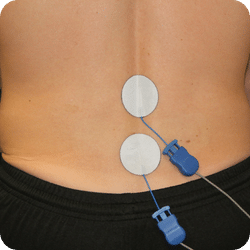
Low Back Pain Focused Over the Spine
Low Back

Back Pain in Two Locations (e.g. Bilateral Low Back Pain)

Low Back Pain on One Side of Spine (e.g. Unilateral Pain)

Low Back Pain Focused Over a Facet Joint

Low Back Pain Focused Over the Spine
Low Back
Hips
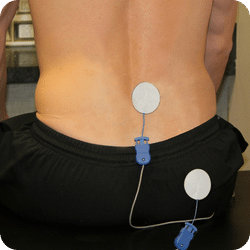
Radiating Back Pain – One Pad Over Origin of Pain, One Pad Over First Pain Site Closest to Origin (Pads Must be on Skin)
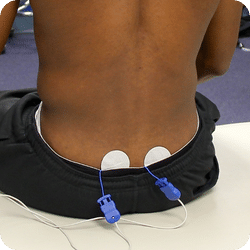
Sacroiliac (SI) Joint Pain; Pain from Interstitial Cystitis
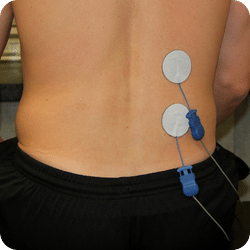
Back Pain Over Large Area (e.g. Rotational Strain)
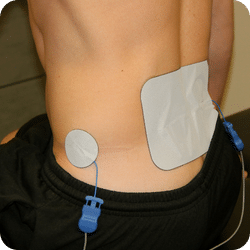
Hip Pain in One Location
Ribs/Obliques
Groin
Quadriceps
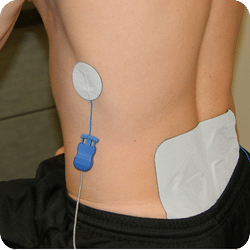
Rib or Oblique Pain in One Location
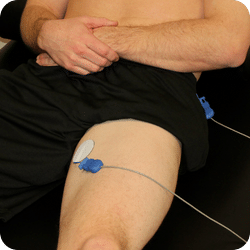
Groin Pain in One Location
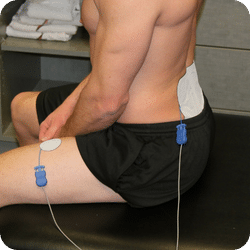
Quadriceps Pain in One Location
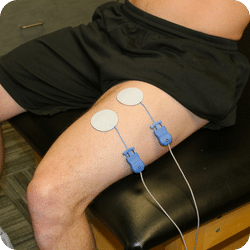
Quadriceps Pain Over Large Area
Hamstrings
Knees
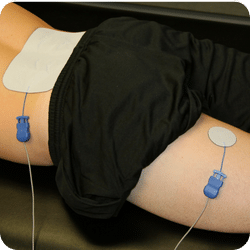
Hamstring Pain in One Location
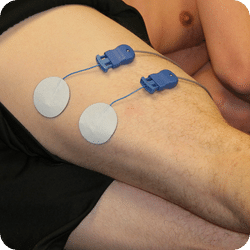
Hamstring Pain Over Large Area
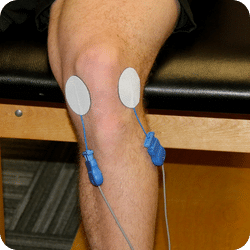
Pain Throughout Entire Knee (e.g. OA or Total Knee Replacement)
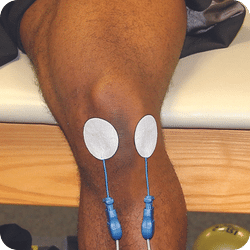
Pain Towards the Front of the Knee (e.g. ACL Sprain)
Knees
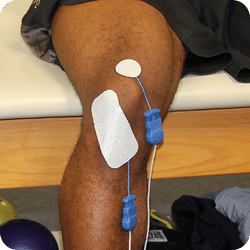
Pain Above Knee (e.g. Quadriceps Tendinitis)
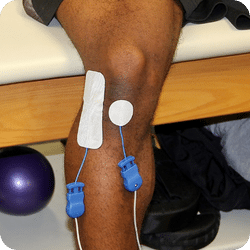
Pain Below Kneecap (e.g. Patellar Tendinitis)
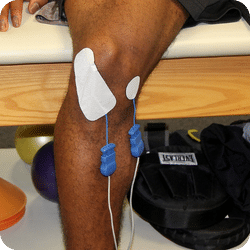
Pain in Inside of Knee (e.g. Bursitis, OA, MCL Sprain)
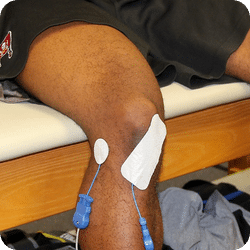
Pain in Outside of Knee (e.g. Bursitis, OA, LCL Sprain)
Knees
Illiotibial (IT) Band
Shins
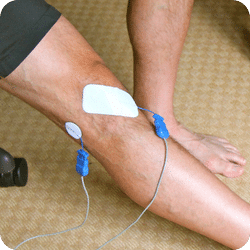
Pain in Back Side of Knee (e.g. PCL Sprain)
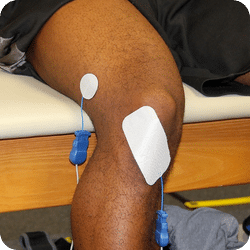
Pain in Illiotibial (IT) Band in One Location
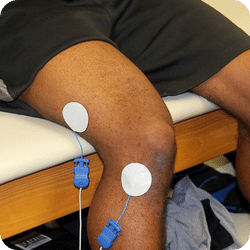
Pain in Illiotibial (IT) Band in Two Locations
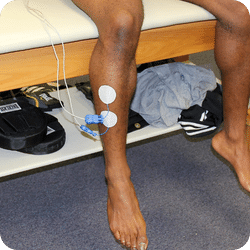
Pain in Outside of Knee (e.g. Bursitis, OA, LCL Sprain)
Calves
Ankles & Feet
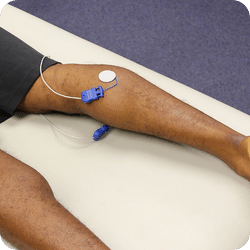
Calf Pain in One Location (e.g. Gastrocnemius Strain)
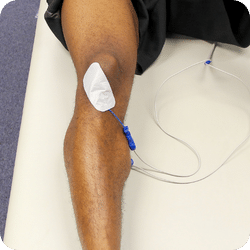
Calf Pain – Round Pad is Over Pain Site, Rectangular Pad is Angled Across Knee
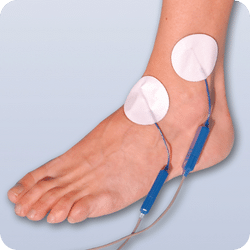
Foot or Ankle Pain in Two Locations, High Ankle Sprain
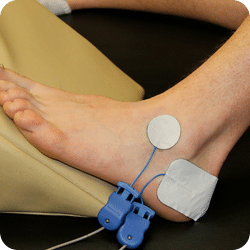
Lateral Low Ankle or Foot Pain in One Location
Ankles & Feet
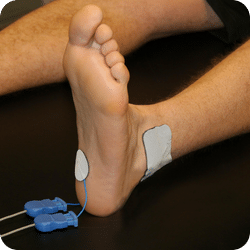
Plantar Fasciitis
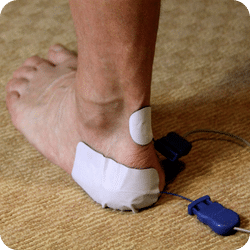
Achilles Tendinitis (Primary Pain in Achilles Tendon)
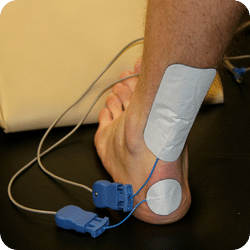
Achilles Tendinitis (Primary Pain in Heel)
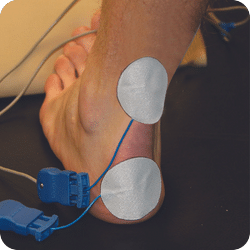
Achilles Tendinitis (Pain in Heel and Achilles Tendon)
Ankles, Feet & Toes
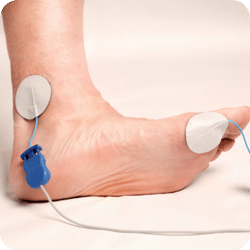
Pain from Diabetic Neuropathy (Tibial Nerve Stimulation)
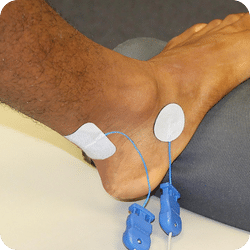
Foot Pain Beneath Ankle on Inside of Heel in One Location
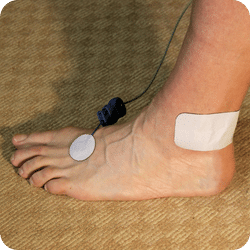
Pain in Top of Foot (e.g. Metatarsal or Neuroma Pain
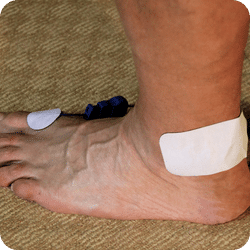
Pain in Toe Joint (e.g. Turf Toe or Phalange Pain)
Neck
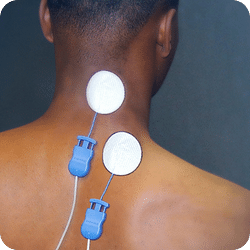
Radiating Neck or Cervical Pain
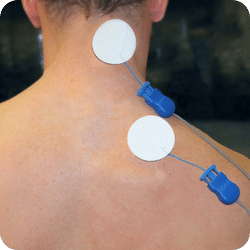
Neck or Cervical Pain in Two Locations
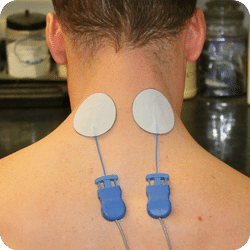
Bilateral Neck or Cervical Pain
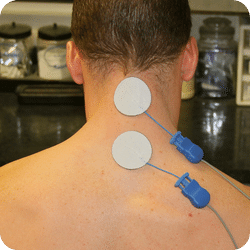
Neck or Cervical Pain in Multiple Discs
TMJ
Shoulders
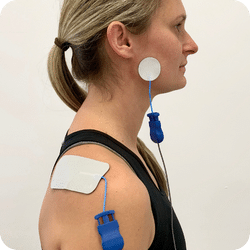
Temporomandibular Joint Pain or Pain Along Trigeminal Nerve
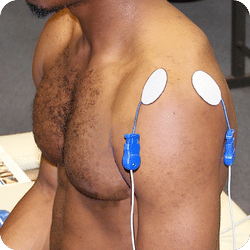
Shoulder Pain Throughout the Joint or Frozen Shoulder
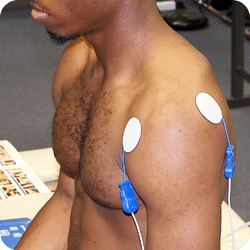
Shoulder Pain in Two Locations
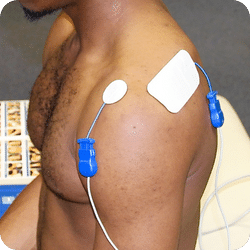
Pain at Top or Throughout Shoulder (e.g. AC Sprain or Frozen Shoulder )
Shoulders
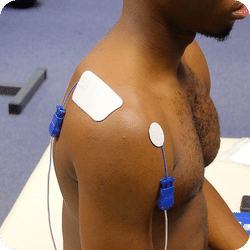
Pain in Front of Shoulder (e.g. Biceps Tendinitis)
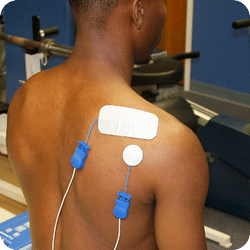
Pain in Back of Shoulder (e.g. Infraspinatus Strain)
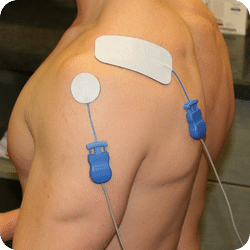
Pain in Edge of Shoulder (e.g. Rotator Cuff Tendinitis)
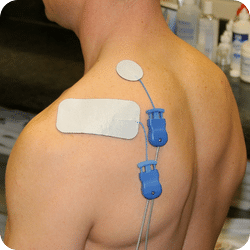
Trapezius Pain in One Location (under small round pad
Shoulders
Elbows
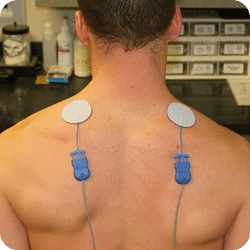
Trap Pain in Two Locations (e.g. Bilateral Trapezius Pain)
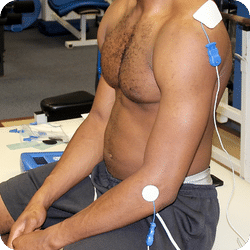
Pain in Outside of Elbow (e.g. Lateral Epicondylitis)
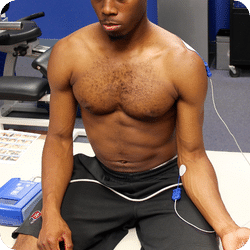
Pain in Inside of Elbow (e.g. Medial Epicondylitis)
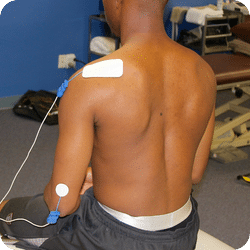
Pain Behind Elbow (e.g. Triceps Tendinitis)
WRIST / HANDS / FINGERS
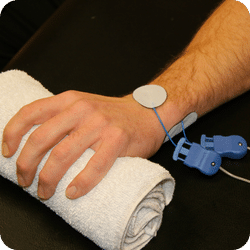
Pain in Back of Wrist (e.g. Sprains, Strains, Tendinosis)
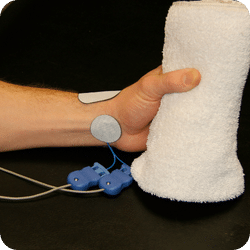
Pain in Front of Wrist (e.g. Sprains, Strains, Tendinosis)
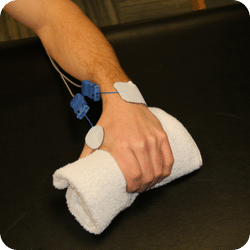
Thumb Pain (e.g. Thumb or UCL Sprain)
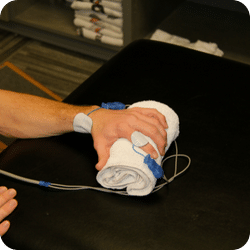
Pain in Finger Joints (e.g. Metacarpal Phalangeal Joints)
Resources
BioWaveHOME Brochure
BioWaveHOME QRG
BioWaveHOME Manual
BioWave RX Form
PRO Sports RX Form
FSS Contract
Important
Contraindications
When Not to Use BIOWAVE
- Do NOT use BioWave if you have an implanted cardiac pacemaker.
- Do NOT use BioWave if you have epilepsy or are prone to seizures.
- Do NOT place electrodes over the heart, or across the thoracic volume. Electrodes can be applied to the back of the thorax and lateral aspect of the upper limb (i.e. below/down the shoulder).
- Do NOT place electrodes on the front or side of the neck.
- Do NOT place electrodes on top of the head.
- Do NOT place electrodes over open wounds, broken skin, rashy skin or sensitive areas.
- NOTE: Electrodes MAY BE PLACED directly over or in the proximity of implanted metal hardware including total joint replacements, rods, plates, screws, anchors and pins. See User’s Manual for more information.
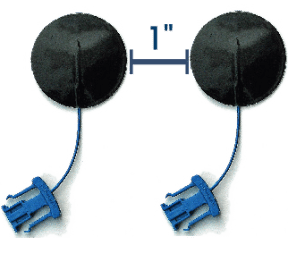
- ELECTRODES (PADS) MUST NEVER TOUCH EACH OTHER DURING THE TREATMENT
- 1.0 inch (2.6 cm) is the minimum spacing between Pads.
- There is NO maximum spacing between any Pads.
- If the edges of the Pads touch during the treatment, it may cause a burn.
- Pads typically can be reused about 8-10 times.








